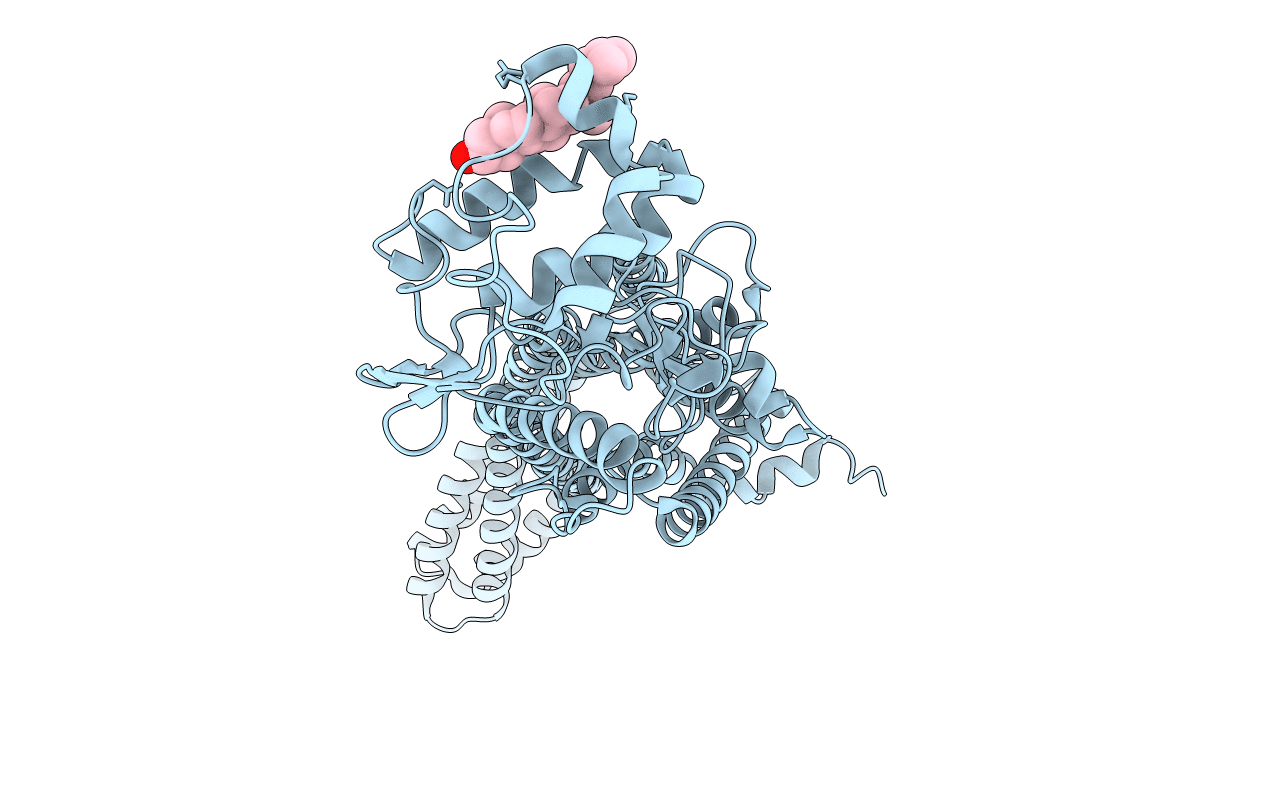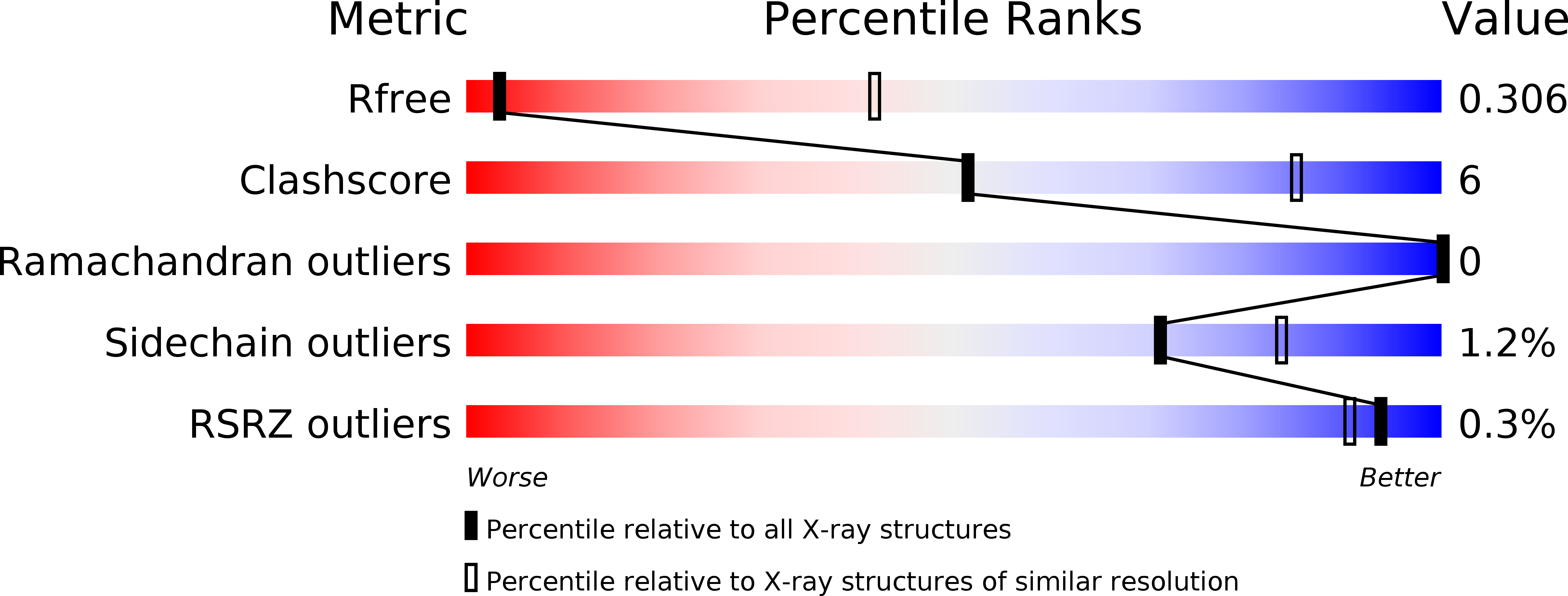
Deposition Date
2018-04-14
Release Date
2018-05-23
Last Version Date
2024-11-20
Entry Detail
PDB ID:
6D35
Keywords:
Title:
Crystal structure of Xenopus Smoothened in complex with cholesterol
Biological Source:
Source Organism:
Xenopus laevis (Taxon ID: 8355)
Escherichia coli (Taxon ID: 562)
Escherichia coli (Taxon ID: 562)
Host Organism:
Method Details:
Experimental Method:
Resolution:
3.90 Å
R-Value Free:
0.30
R-Value Work:
0.25
R-Value Observed:
0.25
Space Group:
C 1 2 1


